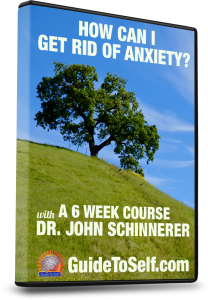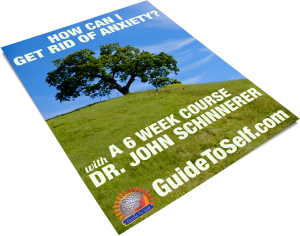How Can I Get Rid of Anxiety?
Top Tips to Get Rid of Anxiety
Many clients have asked me ‘How can I get rid of anxiety?’ It’s a question that burns within everyone who has dealt with panic attacks or sporadic anxiety. Anxiety is painful and uncomfortable. While everyone has anxious moments, some people are more prone to anxiety than others. When anxiety is frequent, it begins to occupy a large part of your mental space – anticipating anxiety, fearing anxiety, dreading anxiety, and looking for ways to get rid of anxiety. At it’s worst, anxiety can prevent you from living a normal life.
To prevent that from happening, here are some of the top scientifically-proven tips to help you get rid of anxiety…
1. If you have a high level of anxiety, you have two options. Let it control you or learn to manage it. Letting anxiety control you means giving in to anxiety and living a life cut thin by fear. This is not recommended. It is far better to actively seek out proven tools to manage anxiety, tools used by those who have suffered from and learned to manage their anxiety. Understand that, psychologically, you have two options. The first is believing nothing can help you (i.e., a fixed mindset). The second is understanding that you can learn to manage your anxiety via ongoing effort and perseverance, that learning anxiety management is a skill which you get better at over time and with continued practice (i.e., a growth mindset). So resolve to adopt a growth mindset with regards to your anxiety. Resolve to find the best tools which work for you. You will learn to manage your anxiety with practice and perseverance.
2. Practice mindfulness. Mindfulness is a form of meditation which has 45 years of research behind it. This research has shown mindfulness to be effective at reducing anxiety, as well as anger and depression. It’s simple but it’s not easy. The idea is to sit in a comfortable position. Focus on your breath. As you do so, your mind will start to chatter (because that’s what minds do!). As soon as you realize your mind is off your breath, in a nonjudgmental manner, take note of what is on your mind. And then return your attention to your breath. Two weeks of mindfulness, 15-20 minutes a day, has been shown to change how you think. Eight weeks of practice results in physical changes in your brain. This practice helps give you greater control over your attention and gives you the ability to stay longer in the present moment.
3. Tune in to your body. Throughout the day, pay attention on where the feeling of anxiousness arises in your body. Simply hold your attention there, and simply be curious about it until the feeling dissipates. For many of us, anxiety shows up in the abdomen, chest or throat. Staying curious about your feelings of anxiety allows the feelings to pass more quickly. Practice this for five or ten minutes to help reduce your anxiety.
4. Exercise. Anxiety is excess energy. One of the best ways to reduce excess energy is to do some aerobic exercise. Go for a swim, jog or walk. Even a quick walk around the outside of an office building during your break at work will help as it gets you outside and gets the blood and oxygen flowing. The hardest part is becoming anxious and trying to contain that anxious energy. Don’t contain it! Let it loose! Use it!
5. Share your anxiety with someone. One of the best tools for getting past anxiety is simply sharing how you are feeling with someone else. Imagine you are waiting at the dentist’s office and you are getting increasingly nervous. One strategy is to speak to someone sitting next to you. Start a conversation. This takes your attention off of your internal dialogue and puts in on the other person. Anxiety is partially an overfocus on our internal conversation. So one solution is to take away it’s energy by focusing on talking to another person. If you are comfortable doing so, tell them that you are nervous about seeing the dentist. Being honest about being nervous makes you more human and approachable and turns down the volume on your anxiety.
6. Help another person. Anxiety wants to keep your attention focused on you. One of the best tips for getting rid of anxiety is to turn your attention outwards towards other people who need your assistance. Inevitably, it will distract you from your own worries.
7. Do something pleasurable. Anxiety cannot co-exist with a pleasurable feeling. So another strategy is to do something which gives you sensory pleasure when you begin to get anxious. For example, you could ask a loved one for a hug. Have a healthy snack or a meal that you find delicious (and savor it!). Take a warm shower. Hang out in a hot tub. Put a cold towel on your face. Wash your hands in cool water. Smell a flower. Listen to some relaxing or inspiring music. Whatever will help you to focus on your 5 senses is helpful.
8. Lose yourself in a repetitive activity. Eat some raisins or crackers. Snap a rubber band on your wrist. Run your finger along the edge of a comb or key. Rub a worry stone. Count the number of packs of gum when you’re in line at the store. Time how long it takes the person at the counter to get through each customer. Write out several coping statements (e.g., “I can deal with this even if it is uncomfortable”) and read it over and over. Count backwards from 205 by threes.There are may possibilities here. The idea is shift the energy from your emotional mind to your rational mind.
9. Master the skill of thought stopping. This is a classic, proven method for getting out of a negative thought spiral. This works very well with deep breathing. Do the following…
a. Breathe deeply. Shout “Stop!” or “Knock it off!” Slap the arm of a chair or a desk with your palm at the same time. Obviously, you can’t do this if others are around. It works best to practice this on your own. Then, when you are with others, you can repeat “Stop!” silently, in your head. With practice, you can learn to interrupt those pesky anxious thought spirals. Another option is to use a rubber band snap on the wrist in place of saying “Stop.”
b. Repeat as necessary.
c. Replace negative thoughts with supportive ones. “I can handle this.” “I got this.” “I can deal with this.” “This will pass.” “I will survive this even if it is uncomfortable.”
Once you have interrupted the negative thoughts, focus on your breathing deeply and slowly into your belly. This pulls your attention out of your head and places it on your body. Any technique which gets you to focus on your entire body rather than being stuck in your head is helpful here.
10. Excuse yourself. Give yourself permission to leave the situation. Remember, what you feel on the inside is very different than what people see on the outside. Typically, no one knows what is going on inside of you. Your anxiety isn’t apparent from the outside. Only from the inside can you tell how bad the anxiety is. So have a few phrases at the ready to get yourself out of situations…
- “Excuse me. I need to go to the bathroom.”
- “That’s a great question. Let me get back to you on that.”
- “I do best when I have time to think about things. Let me think about it.”
- “Pardon me, I need to get a drink of water.”
The key is to have 1-2 of these memorized and practiced so you can access them when your anxiety is spiking.
Remember, begin with a growth mindset – you can learn the skills needed to manage your anxiety. It requires ongoing perseverance and effort. The next step is to find tools which work for you. Then practice those tools over and over and over. Eventually, you will learn to manage your anxiety.
About the Author – Dr. John Schinnerer
Dr. John Schinnerer, an expert in positive psychology and anger management, is revolutionizing the way in which people make sense of the mind, behavior and emotion. In 2011, he was one of three experts (along with Paul Ekman and Dacher Keltner) to consult with Pixar on Inside Out. He was featured in a documentary on the impact of violence in the media entitled Skewed. He has developed a unique coaching methodology which combines the best aspects of entertainment, humor, sports psychology, positive psychology and emotional management techniques. His offices are in Danville, California. He graduated from U.C. Berkeley with a Ph.D. in educational psychology. He has been a speaker and coach for over 16 years. He hosted over 200 episodes of Guide To Self Radio, a daily prime time radio show, in the SF Bay Area. Dr. John’s blog, Shrunken Mind, was recognized as one of the top 3 in positive psychology on the web (drjohnblog.guidetoself.com). His new video blog teaches people the latest ways to manage anger using positive psychology. (WebAngerManagement.com). He teaches individuals paths to sustainable happiness via positive psychology and ongoing practice at HowICanBeHappy.com. Most recently, he finished an online anxiety management course entitled How Can I Get Rid of Anxiety?



Recent Comments